#designer fusion set for Girls
Explore tagged Tumblr posts
Text
Designer Fusion Sets for Girls at ScrollnShops
ScrollandShops.com - A trendy multi-designer online store in India. It houses multiple designers under one roof who believe in curating exquisite and premium handcrafted styles by local artisans and designers. ScrollnShops offers an extensive array of Pret and Couture including Western clothing, Indian Wear, royal designs, and classic styles for women, men & kids. At ScrollnShops, we have something for everyone that will complement your style and enhance your wardrobe. Hello, fashionistas! The festive season is quickly approaching. This is the perfect opportunity to update the wardrobe for your little princess to show off her unique style and leave a memorable impact at every festive event and party! With ScrollnShops. While traditional Indian outfits have long been the heart and core of festive fashion, a fashion revolution is underway: the magical realm of fusion sets for you and your young ones.
Categories Related to Kids Wear
Kurta Sets For Boys
Shirts For Boys
Bottoms For Boys
Jackets For Boys
Suits For Boys
Siblings Sets
Co-ord Sets For Boys
Presenting the Exquisite Fusion set for girls by Indian Designers At ScrollnShops
Little Brats | Littleens | Not So Serious By Pallavi Mohan - KidsFusion Jacket set overlays have become a stylish statement in this modern era. Its majestic embroidery and ornamentation make it truly extraordinary. This set includes a variety of designer jacket styles, such as a Blazer, Flared Jacket, Oversized Coat, and more, which may be worn over Trousers, Shirts, or Skirts, as well as a Long Dress. It results in a versatile look that may be worn for both formal and informal occasions. Embellished jackets lend a sense of elegance to an outfit.
Top and skirt is one of the most popular fusion ensembles for girls. Designers have combined Traditional Skirts, Wrap Skirts, Pleated Skirts, Asymmetrical Skirts, Draping Skirts, and more with various styles of contrasting Tops, Crop tops, Off-the-shoulder or Clod Shoulder tops, Floral applique tops, or even Shirts with integrated embroidery to create an exquisite skirt and top set. This style is an ideal combination of elegance and gorgeous beauty. This trend is perfect for weddings, parties, and other special occasions.
Dhoti and tops are inspired by traditional Indian dhotis of various forms, such as pleated Dhoti skirts, Dhoti pants, and more, and are combined with Modern tops to produce a lovely and comfortable look. It has a sparkling appearance thanks to beautiful needlework and embroidery like cut dana or sequence. This Fusions set is ideal for pujas, holiday parties, and even semi-formal events.
Sharara Saree's set has achieved enormous popularity in recent times. It is a three-piece attire with a Crop top or Blouse, a Sharara, and a Shrug or attached saree drape that provides a rich appearance. Its included embroidery genuinely distinguishes it and showcases saree flair without the hassle of transporting a saree for your little darling. Prepare to steal the show since it's ideal for weddings and festive occasions.
Other Categories
Women Indian Wear
Women Western Wear
jewellery
accessories
men
kids
Visit Scrollnshops To Buy a Designer Fusion Set for girls at ScrollnShops for all occasions
Embroidered Palazzo Set | Red Embroidered Palazzo Set | Thread Work Co-ord Set | Cherry Blossom Jacket & Pant Set | Red Embroidered Sharara Set | Blue Sharara Saree Set | Embroidered Bib & Pants Set | Blue Ruffle Top & Shorts | Lavender Ruffle Top & Pants | Fruit Printed Top & Palazzo Set | Poncho & Dhoti Set | Carrot Print Top & Dhoti Set | Floral Applique Top & Skirt Set | Flared Trouser Set | Tailored Jacket & Skirt Suit | Buttoned Corduroy Set | Flared Jacket & Dress Set | Oversized Coat & Dress Set | Embellished Corduroy Set | Classic Blazer & Skirt Set | Embroidered Saree | Floral Sharara Saree | Handcrafted Jacket Set | Ruched Co-ord Set | Cold Shoulder Skirt Set | Sharara Saree Set | Coat & Dress Set | Blazer & Skirt Set | Jacket & Dress Set | Jacket & Skirt Suit | Top & Palazzo Set | Top & Shorts Set | Jacket & Pant Set | Fusion Co-ord Set | Fusion Set Designer wear for all your special occasions:Valentine's Day | Party | Holi | Republic Day | Independence Day | Ganesh Chaturthi | Raksha Bandhan | Navratri | Diwali | Christmas | New Year | Wedding | Mehendi | Sangeet | Cocktail | Roka | Reception | Haldi | Festival | Birthday Party | Casual & Daily | Women’s Day | Eid | Travel | Holiday | Vacation | Beach | Work | College and more!
Related Reports:
https://www.ganjingworld.com/news/1h1477ivb8d61q8VSn9qbqTxU1td1c/designer-dreams-your-ultimate-destination-for-womens-fashion-onlinehttps://www.ganjingworld.com/news/1h1477uih2e6hwnEV3xCnHAfW17m1c/trendy-treasures-exploring-the-best-online-shops-for-womenhttps://www.ganjingworld.com/news/1h1478t0it22dFxj7Dgh7u7C311j1c/discount-designer-delights-unveiling-the-best-online-shopping-for-womenhttps://www.ganjingworld.com/news/1h1489olrj26d9zEwxDxC8qnq1a81c/luxury-at-your-fingertips-womens-high-end-clothing-onlinehttps://www.ganjingworld.com/news/1h1489s3v3o6BC8o3yc1zkNGL1a81c/effortless-elegance-top-online-dress-stores-for-womenhttps://www.ganjingworld.com/news/1h148ako05mhXSAHN9P5o9wDK1pq1c/fashion-forward-dive-into-the-best-online-stores-for-womens-clothinghttps://www.ganjingworld.com/news/1h148ambsod1p4w0ZI46CWzOz1691c/designer-dreams-your-ultimate-destination-for-womens-fashion-onlinehttps://www.ganjingworld.com/news/1h148c4fsbt3MwexuNi0gArGX1mk1c/trendy-treasures-exploring-the-best-online-shops-for-womenhttps://www.ganjingworld.com/news/1h148c6vkfb1vMK2JxrAO5BBI10f1c/unveiling-the-best-online-shopping-for-womenhttps://www.ganjingworld.com/news/1h148dglrth3ZU4UZ9V5qq3DA1rh1c/indulge-in-elegance-explore-designer-clothes-onlinehttps://www.ganjingworld.com/news/1h148djckj8wvk1AZFdhSWhn41931c/chic-and-trendy-your-guide-to-buying-womens-fashion-onlinehttps://www.ganjingworld.com/news/1h148ebqm6d2OWJIObCbMUg1q1ps1c/elevate-your-style-discover-the-best-online-clothing-for-womenhttps://www.ganjingworld.com/news/1h148eecipg583lzk0QzqDEca1dr1c/sophisticated-selections-unraveling-the-world-of-designer-wear-onlinehttps://www.ganjingworld.com/news/1h149pndoe32qY7olC2VPopDp1951c/sophisticated-selections-unraveling-the-world-of-designer-wear-onlinehttps://www.ganjingworld.com/news/1h149ppppiq2FeFEXrlbrEQzT1up1c/indulge-in-elegance-explore-designer-clothes-onlinehttps://www.ganjingworld.com/news/1h149qmvpa93vY11PTOLFPLBP1mm1c/chic-and-trendy-your-guide-to-buying-womens-fashion-onlinehttps://www.ganjingworld.com/news/1h149qnk4dq72iLn20VZesFNe1h21c/elevate-your-style-discover-the-best-online-clothing-for-womenhttps://www.ganjingworld.com/news/1h149s6i3bqu9VFtIkM0W7wQD1jg1c/sophisticated-selections-unraveling-the-world-of-designer-wear-onlinehttps://www.ganjingworld.com/news/1h149sb715k7kQn7F2LuZNx2E1041c/luxury-at-your-fingertips-womens-high-end-clothing-onlinehttps://www.ganjingworld.com/news/1h149t1bv803h7eIbGQXJ13HP11k1c/effortless-elegance-top-online-dress-stores-for-womenhttps://www.ganjingworld.com/news/1h149t207pcsN4vBFFBIfPuCG1v61c/fashion-forward-dive-into-the-best-online-stores-for-womens-clothinghttps://www.ganjingworld.com/news/1h149toujl45AA7wIo1usUWuO1bv1c/designer-dreams-your-ultimate-destination-for-womens-fashion-onlinehttps://www.ganjingworld.com/news/1h149u2dn5s4Qe9wfHAvmnQ0g1qc1c/trendy-treasures-exploring-the-best-online-shops-for-womenhttps://www.ganjingworld.com/news/1h14aps35qg7BGpGYSm8LBpKv1l91c/chic-and-trendy-your-guide-to-buying-womens-fashion-onlinehttps://www.ganjingworld.com/news/1h14apv953t3GBpPDyvbMegFF19n1c/elevate-your-style-discover-the-best-online-clothing-for-women
#ScrollnShops the multi designer store#Kids style#ScrollnShops Premium Designer Store online#ScrollnShops luxury fashion store#Embroiderd Fusion Set for Wedding Occasions#Denim Fusion Sets for girls#Kaftan Top & Pants for Kids#Crop Shirt & Skirt for Girls#Skirt Set for Girls#designer fusion set for Girls
0 notes
Text


Design round ups for the week!
Obi is getting a revamped magical girl phantom fusion form with Riddle's Phantom. I decided it needed to be more Obi so I mixed in more elements of a jester into the design. And of course the guy gets a big hammer to smash things with. I bet he says stuff like "It's time for you to lose your head!" and then bashes you with the hammer. (I likely wont make any finished pieces with the phantom fusion designs it's mainly for fun and for lore)
Obi can fuse with the phantoms depending on their relationships with him. Each one gives certain added abilities. However, these forms are unstable. The longer Obi maintains these fusions the greater risk he is at losing himself in them. (Imagine he's fighting an overblot and his face starts to melt) The phantoms all have different relationships with Obi and have differing perspectives on it.
OOf, I want to draw Obi fighting malleus so bad, switching between fusions to the point where he loses track of them. And starts mutating. (the body horror! the angst!!)
Next up is my very traumatized son Tenjin. He's getting a less goofy hairstyle now. And I'm thinking of making him more of a short king. He's still built like a brick shithouse that can fuck you up. But he might not be as tall as you would expect. (Nothing is set in stone yet, but I do enjoy characters who take up the room without needing to be physically the biggest)
In the interest of keeping my ideas in a place I'm gonna monologue some of Tenjin's lore here.
Early childhood: Tenjin grew up with a parent who was definitely not equipped to take care of a child. Due to his parent's narcissistic tendencies, Tenjin was often neglected and put down. His involvement in gangs led him to find a dangerous but sought after sense of community and safety.
He holds himself in very low esteem and has internalized very rigid power dynamics. Tenjin believes that there are only two kinds of people in the world: those who were meant to lead and those who are meant to follow. He believes himself to be a follower, the muscle for most people.
Tenjin initially did not want to go to NRC. But when his acceptance was discovered by his parent, they flipped out. Tenjin and his parent had a big fight that resulted in his facial scar. (I'm not going to go into too much detail on what went down here) After being practically kicked out and with nowhere else to go, Tenjin begrudgingly goes to NRC.
(hehehehe.... can you imagine how bad this is going to get before it gets better? Let me tell you, its only down hill from here for a bit.)
#twisted wonderland#twst#twst oc#doods#twst: obi#twst: tenjin#twst fan art#I am incapable of making ocs that don't have tragic backstories#and I am also incapable of letting them lead happy lives#btw#Tenjin is also dating jamil#so yeah...
103 notes
·
View notes
Text
More Whispers in the Stars concept art:




Just concept art of two characters of a "hard sci-fi" super hero comic I hope to write one day. The first two are of the second "super" we'll see in the series, her people are "tiny" parasitoid arthropod analogs, with females only being around 9 cm excluding the stinger, and males being slightly smaller at 8 cm. The bug girl eventually signs up for her nation's space force (for reference, her "homeworld" is an O'Neill Cylinder), becoming one of the specialized warships of her people thanks to the total consciousness transfer technology of her people (as opposed to the copy-paste system of Soma and Invincible)... Copy-pasting a "soul" is possible. As for the warship she became, it uses fusion propulsion and is armed to the teeth with lasers and auto-cannons, her front outright having an x-ray cannon capable of outright disintegrating any ship unfortunate enough to stumble in front of her.
Very clearly inspired by Asuka and her mech... I'll eventually get around to watching Evangelion, so plz don't spoil. Also, while I haven't been playing it, I do love the designs of the ships from "Children of a Dead Earth."
... I dread the eventual meeting between "Mars" and these people of The Killing Stars, their launch was practically ancient history thanks to the ~natural~ lifespan of her people (only 20-25 earth years)
The next is President Reidmen of the alternate US the story takes place in, he's more or less a stand-in combination of Mitt Romney, Regan, the Bushes, and a few tiny hints of Trump for added "good" measure. Unlike most stories, I'm trying to make him seem "not" evil despite the fact that he's absolutely creampieing the economy and quadrupling down on bombing the fuck out of Afghanistan, Iraq, and Palestine... Unfortunately for him and his shareholding buddies, the Superman (Delroy/The StarKnight) stand-in of the story refuses to let the US and Israel continue to "Manifest Destiny" and sending children to die "fighting tewwism" like he, his friends, and his brother did in Vietnam. The monstrous form isn't something he turns into, but how the StarKnight slowly begins viewing him as the "early" story goes on... also he's just really afraid of Dinosaurs, to the point where he couldn't watch Jurassic Park till he had his nuke-proof flying neutron-star body (he still had the lights on).
The thing about Riedmen is that he doesn't just sit around plotting to further bomb the Middle East, he has hobbies, he has fear, he has a corn farm and a family. He, much like Del, loves model train sets, and thanks to his wealth, it's far more impressive than our main protags, he has four shelter mutts and heavily advocates for the humane treatment of these animals, not because it'll make him look good, but because he actually cares, yet in the same breath will glorify any and all drone strikes Delroy failed to stop for it was "Al-Qaeda/Isis hiding in the Schools/Mosques/Hospitals." He also helps with the legalization of gay marriage in this world's US.
It was simply too funny to not have a Republican President with the last name "Reidmen." I also tried giving him a face that's either kind-looking or somewhat creepy for he is a very clear criticism of how Obama drone struck the hell out of so many children and how it was sold to children like me as a good thing, the American news at the time portrayed those mechanical abominations as some sort of "Super Hero" or "Angel." He has a mustache simply as it's been a very long time since a president had one and I thought it'd make him a bit more unique. The OFF/Paranoia Agent influence is real
@k1-2-ur-heart @toxetta @piko-chan @cyannidex33 @bladeechan @internetsinner
If you find them, the older posts aren't really cannon in terms of design, but are cannon in personality. The story itself would be paneled in a right-to-left flow specifically after Mob Psycho and the Pokemon Adventures manga, though I'd attempt to give it a more "Watchmen" feeling for the backgrounds and such.
!DESIGNS ARE NOT FINAL AND STORY MAY NEVER COME!
#my art#blender#low poly#scifi#scifiart#spec evo#hard sci fi#hard science fiction#alien#pixel art#character art#character design#alternate history#Technology implies Belligerence#alternate timeline#alternate universe#superhero#warship#speculative evolution#speculative biology#space war#space ship
20 notes
·
View notes
Text
You know what, fuck you! *cat girls your Nate, Whisper and Jibanyan*
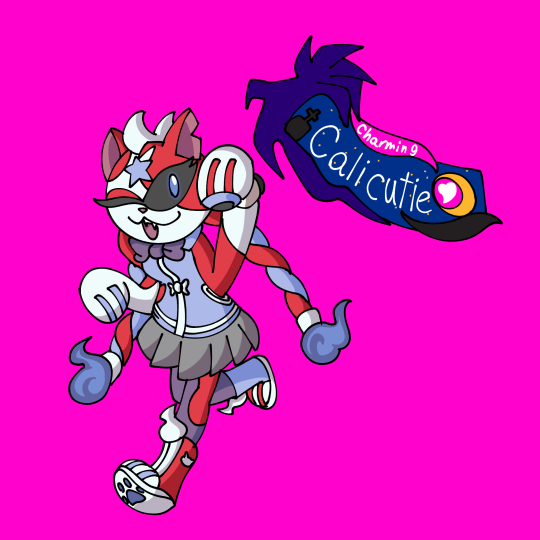
I've been on an Academy Y kick lately, so I decided to make a hero form for my transfem!Nate! (I mostly did this because there a like, 3 girls to get transformations in academy y, it's a total sausage fest.)
The hero forms are by and large fusions of the human and their yokai/onryo companion, so I fused Natsuki with both Whisper and Jibanyan to make: Calicutie! (Calico + cutie)
Fun fact, Calico cats are an almost entirely female breed, so it's actually fitting for a cat girl yokai! For the design, I mostly took inspiration from Taokoko

Honestly, using her for a vase worked not only with the Lolita style I usually put Nat in, but gave me the inspired idea of using braids to represent Buchinyan's tails!
Personality wise, Calicutie is a chaotic mash of Natsuki's sass, Whisper's poor memory and Jibanyan's lack of attention span. Leading to an airhead who can punch like a professional boxer!
Calicutie is an A rank of the charming tribe, and a fire attribute.
Unlike regular yokai, Yokai heros actually have a few different soultimate moves at their disposal. Here's two I think Calicutie would have;
Obviously, she'd have Buchinyan's flurry of fury, with some added weight behind those punches.
And a unique one to this form: Liar Liar, spit fire! Where she lets out a cloud of Whisper's inspiritment mist, then ignites it with Jibanyan's pyrokinesis, setting anything caught in it ablaze!
I hope you guys enjoy!
#yokai watch#yo kai watch#trans yokai watch#yo-kai watch#natsuki adams#art#fanart#buchinyan#academy y#yokai watch jam#oc#oc art
57 notes
·
View notes
Text
Umbrella Academy Next Gen Ocs;
The Hargreeves:

Name: Stanley Ronnie Hargreeves-Gill.
Nicknames: Stan.
Age: 21 years old.
Parentage: Trudy (Biological Mother), Diego Hargreeves (Adoptive Father), and Lila Gill (Adoptive Mother).
Powers: None.
Hobbies: Knife throwing, boxing, karate, playing the drums, flying, dart throwing, graffiti, sparring, listening to music, playing pool, woodcarving, and playing with fire.
Love Interest: Lena Tiefenbach.
Theme Song: "He's Mine" by Rodney Atkins.

Name: Harlan Lester Hargreeves.
Nicknames: Harl.
Age: 19 years old.
Parentage: Carl Cooper (Biological Father), Sissy Cooper née Pocket (Biological Mother), Viktor Hargreeves (Adoptive Father).
Powers: Sound manipulation, enhanced hearing, sound absorption, energy manipulation, energy projection, sonic pyrokinesis, electronic disruption, force-field generation, power augmentation, telekinesis, atmokinesis, and emotion empowerment.
Hobbies: Playing the violin, listening to music, reading, drawing, coloring, playing with his models, toy and model collecting, gardening, swimming, wood chopping, model building, building cars, theorizing, participating in fandoms, and studying cryptids.
Love Interest: Charlotte 'Charlie/Lotte' Rofa.
Theme Song: "Boy in the Bubble" by Alec Benjamin.

Name: Dana Marin Hargreeves.
Nicknames: Day.
Age: 12 years old.
Parentage: Sissy Cooper née Pocket (Adoptive Mother) and Viktor Hargreeves (Adoptive Father).
Powers: Superior adaptation.
Hobbies: Playing the clarinet, playing laser tag, reading, paintball, shooting, learning languages, listening to music, writing songs, scrapbooking, playing house, designing clothes, playing with her stuffed animals and dolls, and photography.
Love Interest: None.
Theme Song: "Stronger" by Kelly Clarkson.
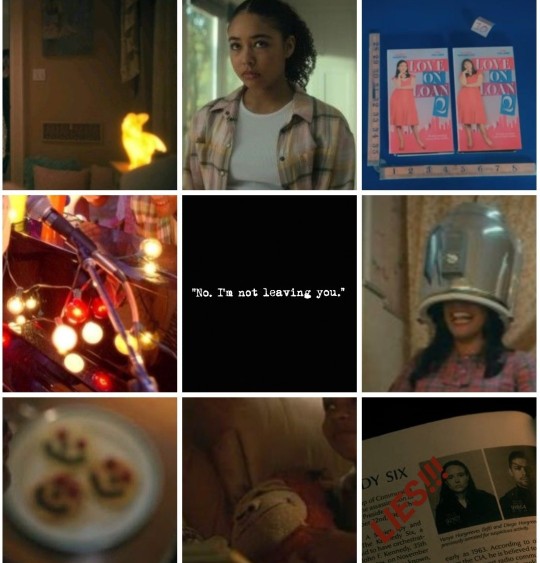
Name: Claire Harmony Hargreeves-Hendrickson.
Nicknames: Claire Bear.
Age: 16 years old.
Parentage: Patrick Hendrickson (Father), Allison Hargreeves (Mother), and Raymond Chestnut (Step Father).
Powers: Mendacity Detection.
Hobbies: Listening to music, dancing, drawing, reading, narrating, making animations, acting, making sets for plays, stuffed animal collecting, singing, and volleyball.
Love Interest: Valentine 'Valen' Clarke.
Theme Song: "Why You Always Lying?" by Nicholas Fraser.

Name: Raymond Callum Hargreeves-Chestnut Jr.
Nicknames: Ray-Ray and Jr.
Age: 2 years old.
Parentage: Allison Hargreeves (Mother) and Raymond Chestnut Sr (Father).
Powers: Weather Manipulation.
Hobbies: Riding his tricycle, playing in the mud, listening to music, being read to, finger painting, playing with his toys, blowing bubbles, making it rain, etc.
Love Interest: None.
Theme Song: "Rain, Rain Go Away!" by Cocomelon.

Name: Starla Marcie Hargreeves.
Nicknames: Star.
Age: 8 years old.
Parentage: Sloane Hargreeves (Mother) and Luther Hargreeves (Father).
Powers: Power Block/Power Pause.
Hobbies: Ballet, singing, dancing, playing dress up, playing house, having tea parties, playing with her dolls, listening to music, yoga, pretending to be an astronaut, stare gazing, coloring, drawing, riding her bike, baking, playing piano, acting, and gardening.
Love Interest: None.
Theme Song: "Powerless" by Linkin Park.

Name: Grace Anita Hargreeves-Gill Jr.
Nicknames: Gracie.
Age: 9 years old.
Parentage: Diego Hargreeves (Father) and Lila Gill (Mother).
Powers: Ergotechnics.
Hobbies: Playing house, playing with her dolls and stuffed animals, playing darts, ballet, coloring, drawing, singing, having tea parties, listening to music, baking, cooking, blowing bubbles, sewing, playing guitar, beating inanimate objects with a bat, gymnastics, and sparring.
Love Interest: None.
Theme Song: "This Little Girl." by Ericovich.
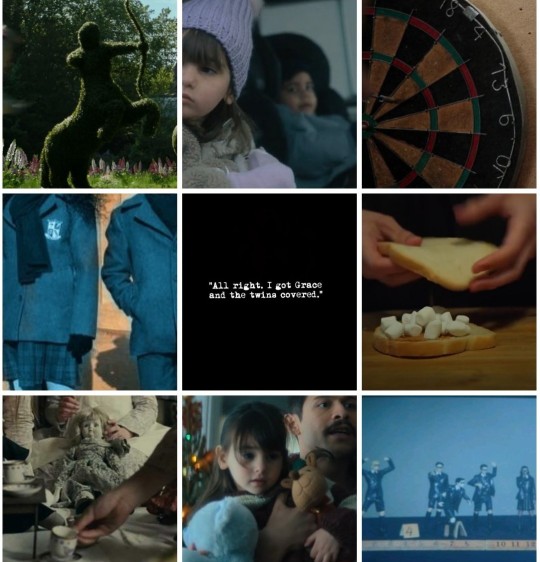
Name: Socorro Eudora Hargreeves-Gill.
Nicknames: Coco.
Age: 5 years old.
Parentage: Diego Hargreeves (Father) and Lila Gill (Mother).
Powers: Fusion, polymorphing, size manipulation, dimension hopping, multiplication, wall crawling, fire breathing, mimicry, sonic scream, and laser vision.
Hobbies: Playing with her toys, dart throwing, knife throwing, listening to music, throwing tea parties, blowing bubbles, running, sparring, tap dancing, gardening, wrestling, coloring, drawing, watching tv, and riding her bike.
Love Interest: None.
Theme Song: "Mama Said Knock You Out." by LL COOL J.

Name: Robin Patch Hargreeves-Gill.
Nicknames: Pitt, Patchy, Patch, and Patchling.
Age: 5 years old.
Parentage: Diego Hargreeves (Adoptive Father), and Lila Gill (Adoptive Mother).
Powers: Fusion, polymorphing, size manipulation, dimension hopping, multiplication, wall crawling, X-ray vision, ice breath, invulnerability, mimicry, multiplication, electromagnetism, combustion, and molecular vibration.
Hobbies: Wrestling, sparring, boxing, karate, dart throwing, knife throwing, gymnastics, gardening, blowing bubbles, running, coloring, drawing, playing with his toys, riding his bike, shooting, and climbing things.
Love Interest: None.
Theme Song: "Riot" by Three Days Grace.

Name: Benjamin Alphonso Hargreeves the 3rd.
Nicknames: Benny.
Age: 3 years old.
Parentage: Sloane Hargreeves (Mother) and Luther Hargreeves (Father).
Powers: None.
Hobbies: Listening to music (mostly his dad's records), wrestling, playing with his toys, playing house, pretending to be an astronaut, blowing bubbles, playing in the mud, playing in the rain, boxing, climbing on things, being read to, and pretending to act.
Love Interest: None.
Theme Song: "Three Year Old." by Eric Church.

Name: Nathan Truth Benjamin Five Hargreeves-Herschberger-Katz.
Nicknames: Nate, Roach, and Mini-Me.
Age: 11 years old.
Parentage: Phạm-Duong Mai (Biological Mother), Klaus Hargreeves (Biological Father), and Dave Katz (Adoptive Father).
Powers: Super speed, resurrection, mediumship, and enhanced healing.
Hobbies: Running, pretending to be an astronaut, ghost hunting, playing dress up, playing with his toys, listening to music, riding his bike, gymnastics, pretending to be part of the circus, playing guitar, playing the xylophone, drawing, reading, playing in the mud, pretending to sword fight, dumpster diving, cooking, learning difficult languages, jumping on the trampoline, playing video games, playing dnd, and baking.
Love Interest: None.
Theme Song: "Gotta Go Fast." by Norman J. Grossfeld and Russell Velázquez.

Name: Rachel-Beth Queenie Mai Promise Hargreeves-Herschberger-Katz.
Nicknames: Rach, Chel, Shelly, Ghost, and Beth.
Age: 6 years old.
Parentage: Klaus Hargreeves (Biological Father) and Dave Katz (Adoptive Father).
Powers: Intangibility, mediumship, invisibliliy, and levitation.
Hobbies: Playing with her toys, digging, dancing, singing, drawing, coloring, sewing, climbing on things, playing army men, having tea parties, pretending to be an archaeologist, reading, acting, playing dnd, knitting, origami, playing board games, and painting.
Love Interest: None.
Theme Song: "Ghost" by Jacob Lee.

Name: Lena Tiefenbach.
Nicknames: Len and Ena.
Age: 22 years old.
Parentage: Axel (Maternal Grandfather) and Keechie Tiefenbach. (Parental Grandfather).
Powers: None.
Hobbies: Sparring, boxing, karate, wrestling, judo, running, gymnastics, dancing, weight lifting, hiking, cycling, listening to music, roller skating, soft ball, golfing, ice skating, camping, fishing, reading, writing horror stories, doomsday prepping, hunting, and shooting.
Love Interest: Stanley Hargreeves-Gill.
Theme Song: "Breakin' Dishes" by Rihanna.

Name: Charlotte Rofa.
Nicknames: Charlie, Char, and Lotte.
Age: 18 years old.
Parentage: Agnes Rofa (Adoptive Mother) and Hazel (Adoptive Father).
Powers: None.
Hobbies: Sparring, boxing, wrestling, judo, target practice, shooting, archery, gymnastics, dancing, weight lifting, painting, photography, camping, doomsday prepping, participating in fandom, playing video games, writing horror stories, and poetry.
Love Interest: Harlan Lester Hargreeves.
Theme Song: "Class Fight." by Melanie Martinez.
(Note: she's deaf).
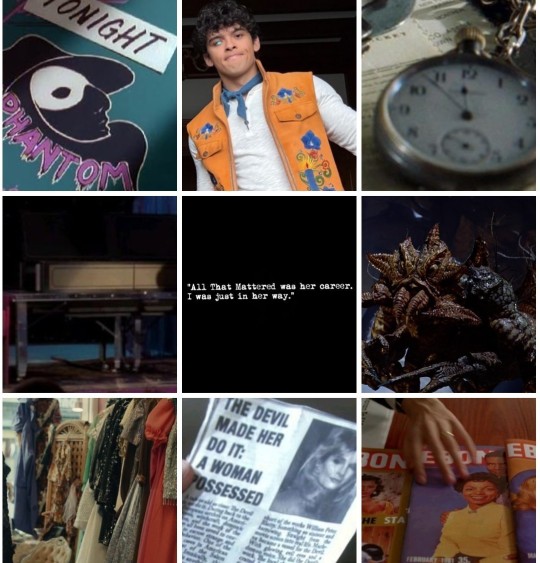
Name: Valentine Clarke.
Nicknames: Valen.
Age: 17 years old.
Parentage: Vivian Clarke (Parental Grandmother).
Powers: Hypnosis and werespider.
Hobbies: Acting, directing, poetry, listening to music, pottery, biking, dancing, weight lifting, playing video games, doing magic tricks, dancing, video editing, picture editing, making outfit boards, reading magazines, fashion designing, photography, and trampolining.
Love Interest: Claire Hargreeves-Hendrickson.
Theme Song: "For Your Entertainment." by Adam Lambert.

Name: Vrigil Traoré.
Nicknames: Vrig and Gil.
Age: 15 years old.
Parentage: Jil Traoré (Maternal Grandmother).
Powers: Astral Projection and Possession.
Hobbies: Playing dnd, reading, studying, doing magic tricks, baseball, trampolining, basketball, lacrosse, archery, dancing, rolling skating, chess, roleplaying, acting, and map making.
Theme Song: "Believer" by American Authors.
Love Interest: None.
(Note: His Mother was one of the 43).
#the umbrella academy#tua#netflix tua#tua next gen#tua next generation#umbrella academy next generation#stanley hargreeves#stan hargreeves#claire hargreeves#klaus hargreeves son#grace stanley hargreeves#coco hargreeves#unnamed hargreeves#diego hargreeves son#klave#almond#liego#sluther#tua ocs#harlan cooper#mixing canons#etc
7 notes
·
View notes
Text
Summaries under the cut
Tuesday McGillycuddy by Angelica Banks
When Tuesday McGillycuddy and her beloved dog, Baxterr, discover that Tuesday's mother ― the famous author Serendipity Smith ― has gone missing, they set out on a magical adventure. In their quest to find Serendipity, they discover the mysterious and unpredictable place that stories come from. Here, Tuesday befriends the fearless Vivienne Small, learns to sail an enchanted boat, tangles with an evil pirate, and discovers the truth about her remarkable dog. Along the way, she learns what it means to be a writer and how difficult it can sometimes be to get all the way to The End.
Windsingers by Megan Lindholm
Harpies don't give up of blood debts. Neither do the men who serve them. A life must be given in return. Devastated by the slaughter of her family and haunted by memories of her own violent revenge, Ki rejects the comfort of her husband's gypsy people and wants only to wander in solitude as an outcast. Across mountains sheathed with ice, through the treacherous shadow of the impassable Sisters, Ki finds herself running for her life, pursued by frenzied Harpies sworn to vengeance; and by one stubborn, dark-haired man who seems intent on being part of her future.
Rodzina by Karen Cushman
In 1881, 12-year-old Rodzina Clara Jadwiga Anastazya Brodski wishes she didn’t have to board the orphan train in Chicago. But she has no home, no family, and no choice. Rodzina doesn’t believe the orphans are on their way out West to be adopted by good families. She’s sure they will become slaves to strangers. Anyway, who would ever adopt a large, tough, stubborn girl of Polish origin? As the train heads west, all Rodzina has is a small suitcase and her family memories from the past. Will Rodzina ever step off the train to find the family that deep in her heart she’s searching for?
Dark Fusion by Neal Shusterman
Tara’s eyes are always hidden behind designer sunglasses, and her hair, blond with glimmering spirals, seems almost alive. Parker watches, fascinated, as one by one Tara chooses high school students to befriend; he even helps her by making the necessary introductions. Over time, her "friends" develop strange quirks, such as drinking gallons of milk, eating dirt, and becoming lethargic.
By the time Parker realizes what Tara is doing, he is too embroiled to stop her. In fact, she has endowed him with certain cravings of his own. . . .To say more would spoil the spooky fun of this wild thriller—let the twist speak for itself and leave you still as a statue.
Myth-O-Mania by Kate McMullen
Puts a modern spin on the Greek myth of how Zeus became the Ruler of the Universe, as told by Hades, Ruler of the Underworld, who insists that Zeus cheated.
Knights of the Borrowed Dark by Dave Rudden
Denizen Hardwick is an orphan, and his life is, well, normal. Sure, in storybooks orphans are rescued from drudgery when they discover they are a wizard or a warrior or a prophesied king. But this is real life—orphans are just kids without parents. At least that’s what Denizen thought. . . . On a particularly dark night, the gates of Crosscaper Orphanage open to a car that almost growls with power. The car and the man in it retrieve Denizen with the promise of introducing him to a long-lost aunt. But on the ride into the city, they are attacked. Denizen soon learns that monsters can grow out of the shadows. And there is an ancient order of knights who keep them at bay. Denizen has a unique connection to these knights, but everything they tell him feels like a half-truth. If Denizen joins the order, is he fulfilling his destiny, or turning his back on everything his family did to keep him alive?
The Whitby Witches by Robin Jarvis
At first glance, the small seaside town of Whitby seems quiet and charming, but eight year-old Ben and his older sister Jennet soon learn that things are not always as they seem. Moved about from foster home to foster home, Ben and Jennet hope to make a fresh start in Whitby. But Ben sees things and people others cannot. There's something unusual about Alice Boston, their new guardian. And what is that horrible howling Jennet hears late at night? Something wicked's brewing in Whitby. Can Ben and Jennet put it to rest?
The Vengekeep Prophecies by Brian Farrey
“You can’t convict what you can’t confirm.” That’s the motto of 12-year-old Jaxter Grimjinx and his infamous family of thieves. And while Jaxter may not have his father’s burglary prowess, his mother’s forgery skills, or his little sister’s mastery of sleight-of-hand, his book-fed knowledge of non-magical solutions to magical problems makes him invaluable to the family’s heists.
But the Grimjinxes may have pulled one con too many in their hometown, Vengekeep. After swapping the prophetic tapestry used to guide Vengekeep’s actions for a fake concocted by Jaxter’s mother, the Grimjinxes are stunned when the false prophecies begin coming true, bringing destruction in their wake.
Suddenly, Vengekeep is besieged by “natural” disasters and rampaging monsters, courtesy of the secretly enchanted counterfeit tapestry. With his family forced to stay and combat the impending doom, Jaxter must leave his hometown in search of a way to keep the increasingly dangerous prophecies from wiping Vengekeep off the map.
Earthaven by Katherine Roberts
When Natalie is captured, she discovers that she has amazing powers and wonders if she can free herself and save Earthhaven, the mystical world beyond the Thrallstone Gateway, where enormous soultrees spin a web of unique magic.
Edgar and Ellen by Charles Ogden
Fire ants. Fraud. Footie pajamas.
Twins Edgar and Ellen live alone -- their parents disappeared years ago, and who can blame them? -- in the quaint, little town of Nod's Limbs, in a grim, gray house overlooking the cemetery and the junkyard. They spend their days avoiding Heimertz, the mysterious accordion-playing caretaker; pestering Pet, a hairy, one-eyed creature of indeterminate species and gender; and wreaking havoc on the hapless citizens of Nod's Limbs.
But wreaking havoc can incur expenses, so the twins come up with a unique fund-raising scheme: They'll nab the pets of Nod's Limbs and transform them into exotic animals they can sell for big bucks. Not a bad plan, if one of the purloined pets wasn't a lethargic python with a raging appetite....
#best childhood book#poll#tuesday mcgillycuddy#windsingers#rodzina#dark fusion#myth-o-mania#knights of the borrowed dark#the whitby witches#the vengekeep prophecies#earthaven#edgar and ellen
19 notes
·
View notes
Text


- Yazmin Vane REBIRTH -
Hello everyone~ I am back from my Lunar New Year break and I'm ready to work again. Starting with the dreaded fifth and final character.
After reviewing my notes and rejected character ideas, I am happy to announce that our girl is finally given another needed makeover. Please welcome back, Yazmin "many hands" Vane.

Yazmin is a fusion of several character ideas into one. First, the overall design of Yazmin is taken from her previous version. Her eye colours are borrowed from Timothy Brian Anderson and the helmet to her alter-ego is based on the initial design for Yazmin.
Yazmin comes from a different side of Kingshaven hence, she is not your usual Switch Blade user. She instead uses this personalized helmet that grants her a unique set of perks. When dawning the helm; Yazmin addressed herself as Yazamanyhands. Sometimes referred to as the Good Sister Gray.
In her personal life, Yazmin is an outgoing person, a little quirky and a bit of a mom figure when chaos ensues. Yazmin is a Hollowaye and she is one of the many rare instances of a Double Mutation. Her Hollowaye is of two different colours but there are no special quirks. Just a unique look.


#Yazmin Vane#Yazamanyhands#Yazmin#aisha rae#Hollowaye#kingshaven#kingshavenacademy#murder the crow reforged#Heterochromia#Gray Lady#champion#heroine#timothy brian anderson#profTBA#original characters#characterdesign#illustration#good sister gray#ranni the witch#elden ring
8 notes
·
View notes
Text
Saw this very pretty art by @arielluva and the tags under the post made me chuckle so much and I felt the need to help and make things clearer 😭 so here is an overly detailed dive into the topic of Himimiku’s dresses.
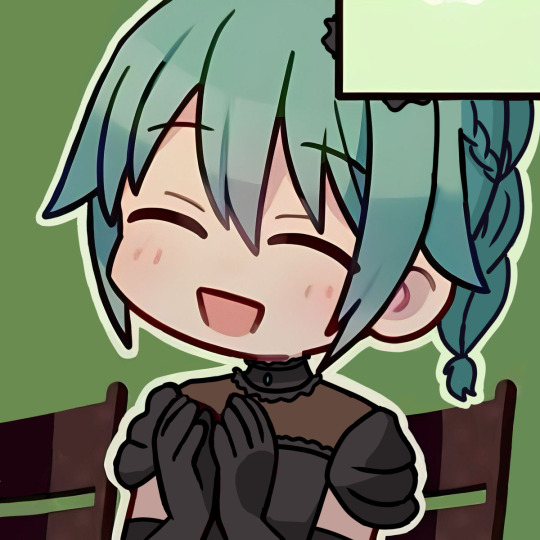
I wish I could say what that mesh is, but literally nobody knows. I have two friends who have been into Himitsu for way more time than me, but none of us really knows what this layer is supposed to be. How long is it? Is it supposed to be an undergarment or a piece of the dress? What is it made of, especially in this semi-fantasy 19th century European setting? But it looks good, I guess, so there’s that. The problem is, not even the authors have agreed on her look. Like, here are two shots from the MV that happen ONE AFTER THE OTHER. Mesh. No mesh.


And here are two pages from Colorless Vow by Suzunosuke and E-ri, where each drew half of the doujinshi.


However, if we look at Miku’s concept art and official art from the book, we can see that she has this mesh more often than she doesn’t, so it’s SUPPOSED to be there after all.
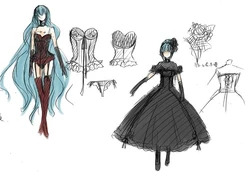

The best answer I could give you is that this transparent part is often forgotten BECAUSE it’s transparent - you just don’t pay attention to it because it’s so similar to just a discoloration or a shadow. Besides, it’s such a weirdly specific detail that I can’t blame anyone for forgetting about it, even in the official material. I myself often forget about details in my art, even as crucial as giving my angel ocs their halos 😭
Besides, with that mesh, it’s much easier to differentiate between Miku’s casual outfit and her wedding dress, since both are black, but one has clearly open shoulders. I’ve even seen people reference both at once, which results in this weird fusion dress, which of course is still pretty, but there are two for a reason. The story is clearly divided into before the wedding and after the wedding, and the visual change represents that. Because Miku’s wedding dress is on the thumbnail, it’s drawn more often than the other one, hence the possible confusion. It can’t be helped, it’s her trademark look, but it pains me just how often people confuse one for the other and vice versa 😭


(Side note but I love how she’s so 🧍♀️there)
Also just because I can, here are Miku’s other looks from the light novel (because she looks good in everything let’s be honest). That girl from the first pic is Lily (as in that vocaloid Lily). She's Miku's maid and is very into designing dresses, which I bet plays into the fact that all these looks are so extra. And while I'm at it, there's also a white version of Miku's wedding dress. Because of course there is.

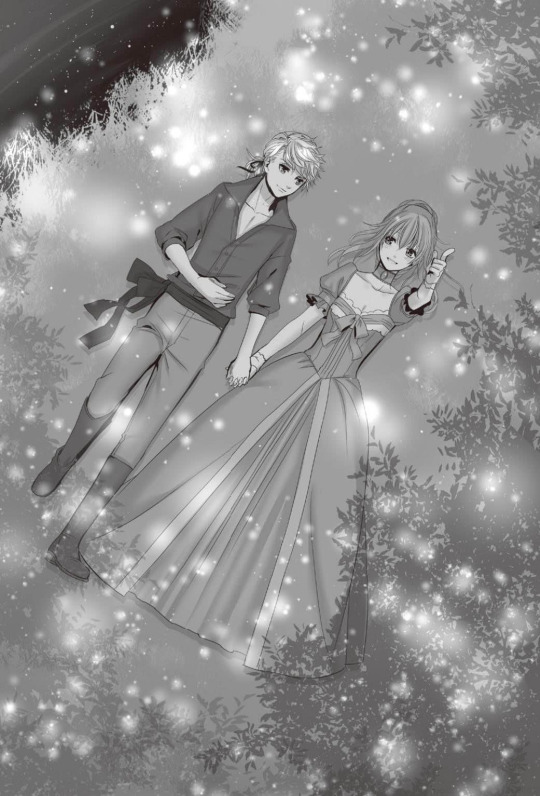
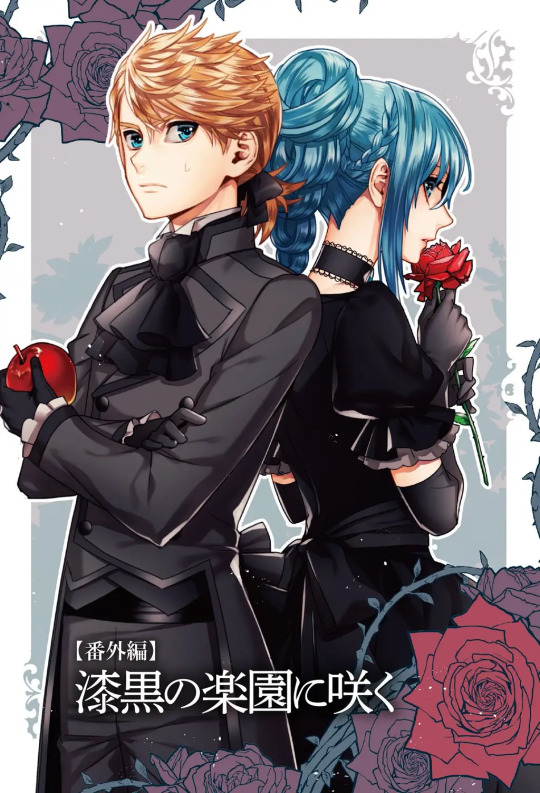

Dunno if that helped with anything, but I wanted to give my two cents. You would think I’ve drawn enough Himitsu fanart to know what I’m doing, but Lady Cyrinpt’s outfits work in mysterious ways. But no matter what she’s wearing, she's still the most perfect babygirl on the planet YvY so yea anyway have a good day guys AND REMEMBER TO GO SEE THAT FANART IT’S VERY PRETTY
#vocaloid#hatsune miku#miku hatsune#alluring secret black vow#himitsu kuro no chikai#hitoshizuku x yama#I’ve been obsessing over that thing for like two years what can I say#I’m actually making a special long analysis/guide for its 15th anniversary this year so take this as a teaser I guess
8 notes
·
View notes
Text
brief overview of some movies ive watched and rewatched over the last few months.
first time viewings:
strange darling - i liked it ! i waited months to watch it and deliberately avoided reading reviews and watching trailers for it and im glad i did.
leave my girl alone - honestly one of the funnest movies ive watched in months. i already want to rewatch. the last 30-60 seconds are glorious.
vhs beyond - ok i was a LITTLE harsh in my review. ok i was entirely petty because [SPOILER] they put real life youtubers in the movie and i was so discombobulated like what are YOUTUBERS doing in my HORROR MOVIE! i also have gripes with the 'little green men' subgenre that mostly stem from the fact that my dad believes in aliens and like im gonna be so honest with you i have 1000000 other things on my mind i dont have time or room to think about whether aliens are real and if the US government is using their technology or whatever i do not care. unless theyre giving me free healthcare i do not want to hear about it.
SEGMENTS I LIKED: Stowaway, Fur Babies, and Dream Girl. (tw for body horror, gore, animal death, etc etc etc)
cuckoo - i wanted a little bit more from it but it was good! i liked hunter schaefer as the lead. i think dan stevens should pull a brad dourif and play scuzzy dudes the rest of his career hes good at it and always looks like hes having fun. i will not pretend to understand what was going on i'll prolly have to rewatch
longlegs - full disclaimer i probably set my expectations too high and it's entirely possible that this movie simply wasnt for me. i really wanted to like it and expected to but. i did not. theres more i could say but i think i said enough. i'll try rewatching next year and see how i feel about it.
dracula 3000 - im not bringing this movie up because it's good, it was horrible, i just want to say that it's been 20 years can someone please make a movie about a vampire in space that's GOOD i know someone out there can do it PLEASE
rewatches:
pandorum - i couldnt tell you if this was a good movie or not i really couldnt i cannot objectively assess movies i watched when i was younger very well. all i can tell you is that i really really really liked the sci-fi/horror fusion. also the creature design still holds up i need to know who did it bec it looks better than some of the stuff out today
lake mungo - found footage horror movie OF ALL TIME
sunshine - im in love w this movie i love everything about it. also something i thought about was that it was weird watching chr*s ev*ns in something not marvel is was actually refreshing for once. we need to get cillian murphy into horror/suspenseful sci fi PLEASE.
the slumber party massacre - idk what to say other than 1) idc what i thought when i first watched it i was WRONG i love this movie so much and i do recommend all the reviews i liked if u want to know some of my thoughts/stuff i agree w 2) valerie bates is currently no. 1 girl in horror for me. as u could probably tell from my icon. and header. and sidebar image. and blog page. and
#hvāñume#inspired by my convo w bee ^^#yes i said some of this on letterboxd but thats ok <3#there are other movies but. i didnt want to go on FOREVER.
10 notes
·
View notes
Note
Whackos foreveeerrrr
Could I see the ideas ?
We can be cringe together 🫶
i fully understand why people are mad with wca's more goofy, less morally ambiguous/complex take on moon knight but also: the scene where the villain tries to mind control the system and melts down over it 'not working' even though 'the readings are a success'... because it's just forcing them to switch is like. one of the funniest system jokes i have ever seen. got teary thinking about it for way too long afterwards, it's so fucking good. i can forgive them taking the mystique out of khonshu and setting us up for the horrors of '06 because we got "khonshu-as-mac forgetting that he needs to breathe and cussing out marc for succumbing to knockout gas" and it is beautiful. Anyway: OTHER special interest
my spin is limited mostly to spidey and mk stuff, so i've got a very ramshackle understanding of 616 (my asm read-through is still in the double digits. thanks, spector!), but -- there are two kinds of crossover aus: outright crossovers, where disparate worlds smash into each other, and fusions, which merge one property into another. and while i find a lot of fun in seeing how characters bounce off of each other, i've always been more drawn to the challenge of taking one set of rules and making them work in another. so it's mostly stuff like that! how do you translate people like afton and henry into a superhero story? how do you work the more supernatural elements into something more sci-fi based? how would mutations play into the stories of characters like the BV and charlie, who are meant to be exceptional? how does mike work, in this universe?
so the rough idea i had ended up being something like "a series of thefts happen across nyc, various heroes get entangled in solving what feel like different mysteries -- children vanishing from their homes, someone stealing parts from labs, brief encounters with a girl with giant shears and mind-melting vibes, and monitors acting as portals to... somewhere -- that lead them to (perfectly normal, still-living uni student) charlie and then michael to eventually come together into the reveal that someone (either afton, BV or henry) afton had a mutation that allowed his cells to persist after death, which afton began experimenting with after BV almost died. elizabeth is a full-on cyborg and michael has implants in his spine. BV is physically stable and comatose, kept in afton's totally normal funhouse bunker under his house, but also fully capable of tearing reality apart with his mind and has to be kept occupied with dreams of his 'friends'. henry probably set up something to do this. also probably killed himself. the current-day incidents are a mix of elizabeth desperately trying to find what she can to stop her brother from waking, an outsider company trying to reverse-engineer what willry using this girl who can transfer herself into computers (vanny) and good ol' fashioned threatening elizabeth, BV slowly waking up and letting his dreams loose, and everyone involved playing both sides like the antisocial freaks they are.", from what i remember!
it's pretty barebones (and i'm not being sarcastic; this is the hastily-written note that gradually becomes a draft of an outline), and it'd all be heavily subject to change, but it's fun. and yes i am the kind of nerd who spends my time thinking about plot structure and how to lay out clues. sue me!!
(as for actually cringe shit: bugbear!vanessa is so perfectly designed to target marc where it hurts with pinpoint precision that i am so, so tempted to throw the cast at the midnight mission. my touys..............)
(The Best System Scene below the cut:)
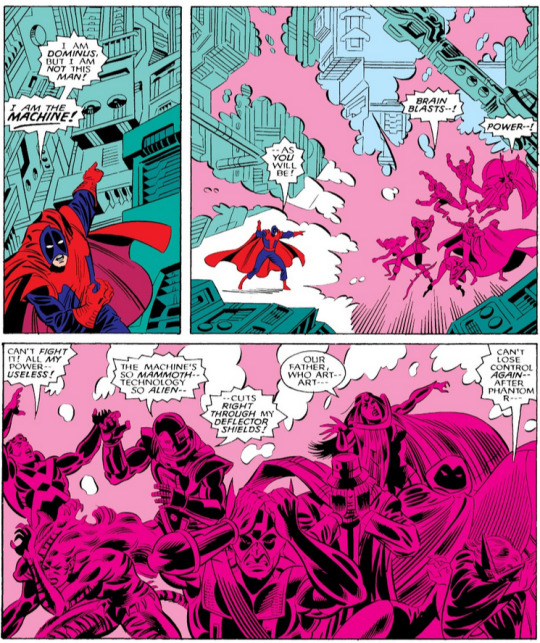
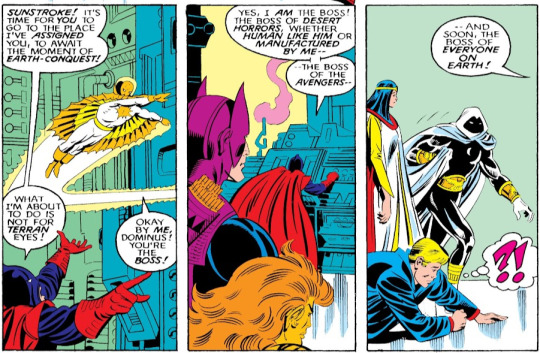
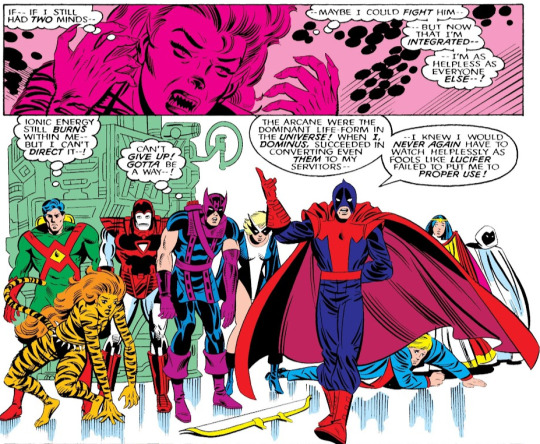
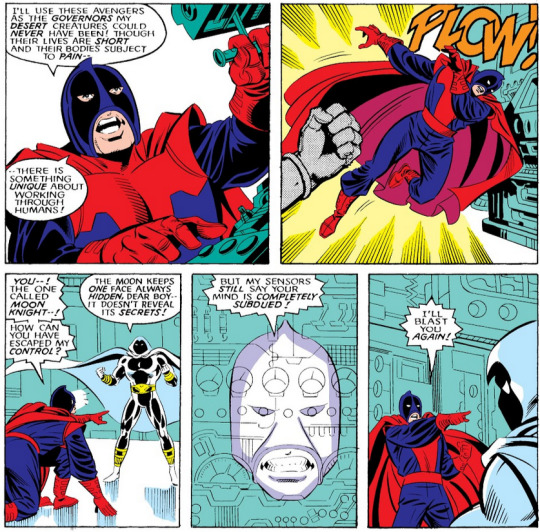
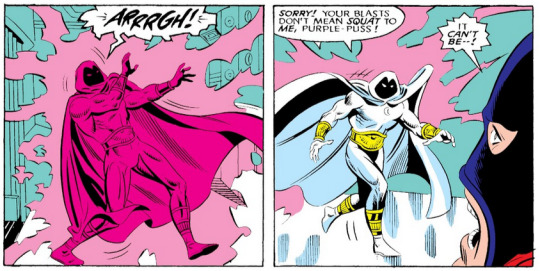

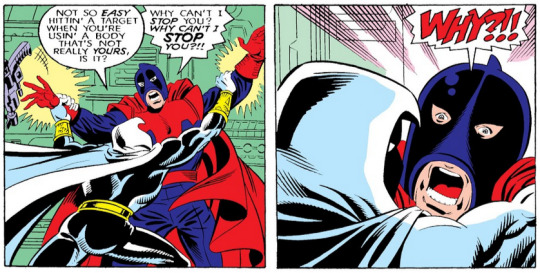
(in order: marc -> steven -> jake)

it's good. read moon knight. Or Else.
2 notes
·
View notes
Note
for the character ask game!!
Raava:
19. How about a relationship they have in canon that you don't like?
25. What was your first impression of this character? How about now?
26. What's something the character has done you can't get over? Be it something funny, bad, good, serious, whatever?
Vaatu:
5. What's the first song that comes to mind when you think about them?
18. How about a relationship they have in canon with another character that you admire?
23. Favorite picture of this character?
Wan:
3. Least favorite canon thing about this character?
25. What was your first impression of this character? How about now?
27. FREEBIE QUESTION!!
THANK U!! obv u knew who i wanted to talk about lmaooo
read more bc it’s yap city under here
raava !!!’
19. hmmm ok so many things hard to say about characters who got SO little screen time lmaoo. so i mean .. that would be the only thing i could dislike about any relationships she had - they didn’t get enough time. i would obv watch 1000 hours of just .. wan and raava existing, doing anything at all. but still ofc being their relationship to each other for the most development of any then .. that’s beside the point
i wish we got more of her relationships with vaatu and korra. i’d love to have seen more in depth exploration of her dynamic and existence with vaatu before they were separated, and also post-fusion, how his existence still affected her going forward. with korra, i love the few interactions we got to see between them but again i just wish we got MORE!!
25. ok the way i honestly don’t remember my FIRST first impression seeing her, but ofc i was uh. how do you say. deeply obsessed forever from the moment beginnings part 2 ended i knew that was something i was never gonna move on from (could’ve never expected the impact it would have on my literal whole entire life but that’s a whole other story lmaoo).
now? that is my fucking GIRL. my woman. i love her so much. i love the way her character has evolved for me over time (as i said in my OTHER ask answer also for her lol, with the small amount of canon time we got there was just always so much room for us to expand on that and i love all the ways that’s grown and changed and expanded in that time)
26. uhhhhh everything. i’ll never get over anything she’s ever done. she exists and i’m like holy shit are you guys seeing this??
vaatu!!! gay boy…..
5. ok agreeing with you that nightwish is absolutely his vibe. but otherwise not really any particular songs come to mind, but y’know… i should look into that more
18. so ofc.. ofc. again with the lack of screen time striking but 😮💨 i think all his relationships in canon are compelling in some way. with raava, there is so much narrative potential there to be unpacked
then ofc i’ve slept on this specific thought way too long, but nightmare as you posed in your tags the other day: considering how he must have felt about wan is SO good. the being that set him free later coming back to be the one that imprisoned him. that’s soooo 🤌🏼🤌🏼🤌🏼
i also think his relationship with unalaq is fascinating but exclusively through the lense that vaatu is the (for lack of better word) innocent one here; he is the victim of unalaq directly, the manipulated one, the one literally backed into a corner with no other way out. that’s juicy as hell
23. can i say my own fucking drawing lmaoo it’s the panel of him alone in the hvac comic…..
wan :’)
3. i’m going to speak my truth. i hate his fucking dumb ass goatee……
i would never draw him without it tho lmaoo it’s too much a staple of his character design it cannot be removed but it doesn’t mean i LIKE IT
(i hate like. most of the facial hair in all of avatar why did the mustache-less beards have such a grip on the character design.. the pointy ones and aang’s weird chinstrap it just all.. it doesn’t work for me IM SORRY)
25. i actually DO remember the very first image i saw of him and what i thought!! the summer before book 2 dropped when they first released some images from it (i think at comic con or something), that was when they announced they were going to address the avatar origin and showed a single imagine of wan (a screen cap from the air nomad village scene lmao yes i know that) and his name and i was like hm … not sure about this.
absolutely no way i expected him to be my specialest boy ever ESPECIALLY all these years later 😭😭😭 and now yes that just. is what he is to me. he’s the specialest boy ever. i love him an unfair amount he’s like a son to me
27. freebie!!! so i’m gonna say first song that comes to mind when i think about him
i have three (3) variations of waava playlists bc i’m insane (and it’s been 11 years come on) so ofc there are many but the number 1 wan specific song to me is king by lauren aquilina and YES i heard it for the first time in 2013 in a beginnings amv lmaoo so it just. from the start was associated with him but also just fits so well imo
4 notes
·
View notes
Text
HYBE ACADEMY- LEE HEESEUNG Pt.31
Hana, Soomin, and Riko arrived at the meeting room with their manager, Myungsoo. As they entered, they saw the Enhypen members-Jungwon, Heeseung, Jay, and Niki-already seated along with several HYBE officials.
Among them, Hana recognized the familiar faces of the Head of Music Production, Mr.Lee, the Creative Director, Ms. Park, and the Head of Artist Management, Mr. Choi.
They offered a polite bow to everyone present. "Ah, Redmoon has arrived. Please, have a seat," Mr. Lee said with a welcoming smile.
The three girls settled down at the long conference table, positioning themselves directly across from the Enhypen members.
"Alright, now that everyone is here," Mr. Choi began, adjusting his glasses, "let's officially start. Thank you all for being here today. As you know, HYBE has been exploring innovative ways to expand the K-pop landscape, and we believe this co-ed subunit has the potential to be truly groundbreaking."
Ms. Park took over, her tone enthusiastic. "The concept we envision for this seven-member group, tentatively named COSMO, is 'Musical Alchemists.' We aim to blend the distinct musical styles and performance strengths of Enhypen and Redmoon to create something entirely new and captivating."
Mr. Lee elaborated on the musical direction. "We're looking at a diverse sound palette. There will be tracks that lean towards Enhypen's powerful and dynamic energy, others that capture Red Moon's intricate harmonies, and, most importantly, songs that seamlessly weave these elements together. The vocal and rap distribution will be carefully considered to highlight each member's unique abilities."
As he spoke, Hana felt Heeseung's gaze flicker towards her for a brief moment before returning to Mr. Lee.
Mr. Choi then addressed the practical aspects. "In terms of schedules, we understand that both Enhypen and Redmoon have existing commitments. COSMO activities will be strategically planned to complement your group schedules, ensuring a balance. There will be dedicated periods for album production, promotions, and potential performances. We will have a separate management team specifically for COSMO to coordinate everything smoothly."
Ms. Park added, "Visually, we want to create a concept that reflects the 'Musical Alchemists and Harmonious Fusion' idea. This could involve interesting styling choices that blend the aesthetics of both groups, as well as unique set designs and choreography that highlight the synergy between the members."
The Head of Promotions, Mr. Kim, spoke next. "Our marketing strategy will capitalize on the existing buzz generated by HYBE ACADEMY. The show itself has already introduced the members and their chemistry to a wide audience, building a significant level of anticipation for COSMO's debut. We will continue to engage with the fans through various platforms, including social media and behind-the-scenes content, to maintain this momentum and further solidify their excitement for the subunit."
Mr. Lee then brought up the topic of leadership. "Now, regarding the leader of COSMO..." He looked around the table. "Do any of you have any initial thoughts on this?"
Jungwon spoke up thoughtfully. "Well, both Hana noona and I are already leaders of our respective groups. Perhaps, for COSMO, it might be a good opportunity for another member to take on that role? Someone who can bring a fresh perspective to the leadership dynamic within this new unit."
Riko, who had been listening intently, offered her suggestion. "How about Heeseung-oppa?" A chorus of agreement followed Riko's suggestion.
Jay nodded enthusiastically, and Niki gave a thumbs-up. The HYBE officials exchanged pleased glances.
Mr. Choi turned to Heeseung. "Heeseung-ssi, what are your thoughts on this? Would you be willing to take on the role of leader for COSMO?"
Heeseung, who had been subtly observing Hana throughout the discussion, met Mr. Choi's gaze with a thoughtful expression. He then looked at his Enhypen members and the Redmoon members. "Yes, I would be honored to take on the role of leader for COSMO. I will do my best to support all the members and work together to create a successful and harmonious unit."
A round of applause filled the meeting room. Hana smiled warmly at Heeseung, feeling a sense of pride. She had always admired his caring nature. She noticed him glance at her again, a soft smile gracing his lips before he turned his attention back to the officials.
Mr. Lee continued, "Excellent. With the leader decided, we can move on to discussing the initial timeline. We are aiming for a potential debut within the next six to eight months. This timeframe allows for adequate time for song selection, recording, choreography development, and concept finalization, while you guys prepare for your activities as ENHYPEN and REDMOON too. There will be regular meetings like this one, involving both the members and the relevant staff, to keep everyone informed and involved in the process."
Ms. Park chimed in, "We also want to emphasize open communication. Your input and creative ideas will be highly valued throughout this process.
This is a collaborative effort, and we want COSMO to truly reflect the unique personalities of all seven of you."
Mr. Choi concluded the main discussion. "So, to summarize, COSMO will be a co-ed subunit with a 'Muscal Alchemist' concept, blending the musical and performance styles of Enhypen and Red Moon. Heeseung has been appointed as the leader. We are aiming for a debut within the next six to eight months, and there will be regular meetings to discuss progress and gather your input. We are incredibly excited about the potential of this project, and we believe that together, you can create something truly special."
The officials then opened the floor for any questions the members might have. Soomin inquired about the album's musical style in more detail, and Mr. Lee provided some broader examples of the sound they were aiming for.
As the meeting drew to a close, Mr. Choi stood up. "Thank you all for your time and your enthusiasm. We will schedule another meeting soon to delve into more specific details. In the meantime, please feel free to reach out to your respective managers if you have any questions."
The meeting room slowly emptied as the HYBE officials and members from both groups stood up and began to leave.
Heeseung stayed behind, watching Hana as she gathered her things, the familiar sight stirring a warmth in his chest. Heeseung stepped closer, lowering his voice to a soft murmur.
"Haneul-ah, do you want to grab a coffee with me from the company café? Just a little break before you head out."
Hana smiled gently but shook her head. "I promised Ayin and Aecha I'd go shopping with them right after this. They've been looking forward to it."
Heeseung's lips pouted adorably. "You just got back yesterday, and already you're off with them? What about me?"
She chuckled, reaching out to poke his arm. "You'll get your time, don't worry. I can't leave my maknaes waiting."
Heeseung let out a playful groan but didn't push further. Instead, he wrapped his arms around her in a tight hug. "I missed you, Hana. And yea, even if we just met yesterday."
"Hey, you're squeezing me!" she laughed, trying to wriggle free. He loosened his grip just enough to look into her eyes, then pulled her back in for a deep, lingering kiss-soft but full of all the feelings they'd kept bottled up since their reunion.
When they finally parted, Hana smiled softly. "I have to go, but I'll text you later."Heeseung grinned.
"I'll be waiting." She gave him one last squeeze before stepping out, feeling lighter despite the bittersweet reality that their time together would be limited again.
♡♡♡Thankyou for reading♡♡♡
#Mukie is sukie🦌#enha#enhypen#enhypen fluff#enha heeseung#heeseung#fanfiction#heeseung x reader#enhypen jay#enhypen jake#enhypen niki#evan lee#leeheeseung#lee heeseung#heeseung lee#park jeongseong#park jongseong#jay enha#jay park#jay enhypen#sim jaeyun#sim jake#jake enhypen#jake sim#jaeyun#park sunghoon#sunghoon enhypen#sunghoon#sung hoon#kim sunoo
2 notes
·
View notes
Text
Exploring Mpho Sebina's Artistic Appreciation of her African and Setswana Roots
By Atang Moalosi and Tefo Kosie
Hailing from the Kgatleng District’s capital Mochudi is Mpho Sebina, a singer-songwriter who has immersed herself in producing and creating the continent's best jazz, soul, and afro-fusion music. A self-proclaimed Pan-Africanist, Mpho's music has been a true reflection of expressing her African and Tswana roots through cognizant use of local rhythmic instrumentation and vocal progressions, to say the least.
The love and use of indigenous elements prevailed notably in her 2015 debut single 'Loves Light' which she explains was inspired by the song Tselane by BLK JKS which is loosely based on a Tswana folktale 'Tselane'. The song, produced by local legendary beatmaker Favi includes elements of the staple beats and claps of traditional folk music production fused with soul. The music video features a cameo of traditional dancers and showcases the landscape of Botswana from the luscious water basins to the barren semi-desert land with the soundtrack playing behind the eye-catching visuals laying a foundation of Mpho’s start to dominance in the music scene.


stills from the 'Tjuele' music video directed by Thina Zibi
It would take a whole two years for Mpho to return and release two songs leading up to the release of her debut EP 'Neo' with very memorable moments such as the song ‘Tjuele’ which is a rendition of another famous setswana folktale with the same name. The song features ATI, another local music giant who sings the chorus repeatedly in the background. This music video in contrast only features Mpho (Tjuele's mother) and a young girl (Tjuele). In the first scene, Mpho is seen caressing the young girl’s hair, both draped in white dresses. Behind them is a famous portrait of a black woman and her son, which is beloved among the black community directly linking to the thematic affectionate scenery painted by the song and the visuals. The song has this continuous click-clack sound, reminiscent of the tune of clapping hands and matlhoa or traditional leg rattles used as a part of uniform for typical traditional dance. Remarkably Tjuele is the only song in the project sung in Setswana.


stills from the 'Slip Away' music video directed by Mpho Sebina and Motheo Moeng
‘Slip Away’ is another beautiful 5-minute song from the Neo EP of Mpho harmonizing over a midtempo beat, the song was also accompanied by a set of visuals that captures the hustle and bustle of the city of Accra in Ghana. The video includes many beautiful shots including Mpho having her hair plaited in the streets, women dressed in beautiful African attire and women carrying their belongings over their heads which is a very common practice amongst African women.
‘LORA’

'Lora' album cover designed by Tebogo Cranwell and Neo Rakgajane
‘Lora’ is Mpho Sebina's debut album, released in 2020 five years after introducing the world to her very enigmatic sound. The album cover itself is quite a striking piece. With its shade of blue background, it only highlights certain parts of Mpho's half-bodily features. The first thing noticeable is the pink highlighted corn rows, her lips and some African beads which include cowrie shells deemed very valuable in most African cultures. This album is easily Mpho's most definitive record, both sonically and visually as it sets her among the most highly decorated singers the continent boasts.



stills from the 'Pula' music video directed by Yannis Sainte-rose
The lead single 'Pula' is taken from the setswana song 'Pula Nkgodisa' which translates to ‘Rain, help me grow’ and the “Rain Rain Go Away” song. She uses rain as a metaphor for pain and shows struggle with the lyrics 'Rain Rain Go Away, I wanna go out and Play’. Later in the song she employs rain as a metaphor for growth posing a divergent perspective with lyrics 'Pula Nkgodise, Pula Mphodisa'. This song reflects on times of struggle and hope as it was released in 2020 when the world was heavily gripped by the coronavirus pandemic and a worldwide lockdown. The music video includes shots of Mpho wearing an African print headwrap and cardigan along with her Bantu knots. The conscious use of Setswana lyrics and visual nuances further displays Mpho's love for making music that centers her heritage as a Motswana.


stills from the Melodi music video directed by Yannis Sainte-rose
The song ‘Melodi's’ music video features Mpho Sebina in a few shots where she is covered by cloth and some other noteworthy scenes with her in front of the backdrop of the abstract painting which matches the colour of her African headwrap. The constant use of African clothing and artefacts in and around her visual presentations accompanying the already Afrocentric sonics just solidify the passion behind the endemic standard she has set for herself.



stills from the Dumelang music video directed by Mpho Sebina
‘Dumelang’ is a very warm and welcoming song that pretty much highlights a very important aspect of Botswana's culture-the standard gesture of greeting. The song hosts a confident Mpho giving the listeners a brief tour of the beautiful country and her own experiences within the context of the song. It also boasts visual excellence, a highly decorated facet of Mpho Sebina as an artist by showcasing parts of Botswana's culture, including scenes of her dressed in clothing sourced from local brands, also sweeping with a traditional broom/ ‘lefeelo la ditlhokwa’ close to a three-legged pot which is quite reminiscent of a traditional home in a village. Other shots include local art persons cameos including Dato Seiko, Nature Inger along with Mboko Basiami the founder of Glotto, a pan-African clothing brand from Botswana. Notably, Mpho is also seen wearing Zulu female head attire called “isicholo”, and the Basotho hat known as “lekorotlo”. Throughout the video, Mpho is dressed in clothing sourced from local brands.
‘Ntsha Nkgo’ is another rendition of a traditional song with the same title, which is often sung during ceremonies. The song touches on aspects of typical traditional celebratory ceremonies, including the culture of sharing traditional beer among family and friends especially older men hence the line ''Ntsha Nkgo re kgaritlheng le bannabagolo''. The sacred events normally include the slaughtering of an animal to be feasted during the ceremony ''Ko Boseja go tlhabilwe Kolobe hoki''
Renditions of traditional folk songs remain a constant theme in Mpho's music as she also reworks 'Sananapo' a song from a well-known folktale in 'Sananapo's Interlude'. Folktales and songs are essential in traditional culture as they are often used as a form of entertainment and an opportunity for the elderly to pass on and teach the younger generation about customs and values which are indigenous to us. Mpho's modern twist to these songs helps revive the connection between Batswana and their culture especially in modern times where most of the older generation believes that our culture is being eroded.


As we await the release of Mpho's sophomore album, It is well evident that Mpho will always centre her African heritage on her music. Alkebulan, which is the name of the next album, is quite an interesting name as it is believed to be the original name for Africa according to the oldest nubian and kinetic texts. In her interview with Drum Magazine, Mpho reveals that her album will feature female artists from different parts of Africa to celebrate the women and their africaness. She also stated that she was influenced by the various sounds of African music.
7 notes
·
View notes
Text
DAIMA EP 15 (SPOILERS) REVIEW/theories
• While I was certainly feeling the tension this episode set out to make me feel, the "just transform already!" fatigue has also set in. Also, probably too much time spent ducking for cover.
• This new Demon girl that traded her hat for THE TERTIAN OCULUS(who had great eyeshadow/lipstick & even her own theme) better get name dropped. Same goes for that buff red haired demon lady from Kadan's castle. She immediately shot up in attractiveness when she spoke in this episode.
• Also, did anyone else assume, for just a moment, that the new demon girl was actually Degesu who shape shifted? I sure did, until I remember Degesu's skin isn't blue.
• It was pretty funny seeing that demon kid from the opuru district point at Goku, the "kid with round ears" to their mom while there's a WAR going on outside their house. Priorities.
• Really feels like Dr Arinsu got away with getting the D ball with no consequence. Just how much can her silver tongue do for her?She even still insists that "Everything is going according to plan". Really now?
• Weird that we didn't hear anyone talking or screaming in their planes & tanks. Just KABOOM, & it's done.
• The way they casually showed off the Evil Third Eye's concept art was crazy.
• So the Evil Third Eye specifically grant otherworldly power via pure magic power, which is then interpreted by all demons as a sign of absolute authority. A guy like King Gohma, who so far has had his magic power hyped up over & over, better be an actual threat that'll at least encourage a new protagonist fusion.
• Would've been nice if they mentioned that King Gohma was the former "vice-Supreme King" as soon as episode 1.
• I said this several reviews ago, but thank goodness Dabura isn't being repainted/retconned into being "not so bad". Brother straight up ruined his father's career for the throne. Also, RIP bug bozo.
• I hope they release official drawings of those former Supreme Kings we saw in shadow. Their designs/silhouettes looked cool.
• The Supreme King castle guards sure wore goofy looking outfits back in the day.
• Degesu, buddy, drop the act already!
• The revive bug scene with Vegeta felt like a waste of a revive bug. AND STILL no memorable Piccolo fight. Like??
• Of course Neva's not helping, because that would be "using his powers for conflict".
• Gotta admit, the scene where King Kadan's plane got blown up made my jaw drop a little. The way the music cut off. Crazy.
• Based on beam colors, it looks like King Kadan's force might be using magilite as an energy source for their weapons, where, maybe, MAYBE, the Gendarmerie weapons are powered by life energy they've drained from citizens, which would explain why said weapons can fire up to 10 days. Will it be explained at any point? Probably not.
• First cliffhanger I didn't super like. Never thought I'd get negative about this series. Maybe the reviewers are getting to me...
• Degesu! Buddy! I know your Supreme King is about to get his comeuppance, BUT IT AIN'T THAT SERIOUS!
4 notes
·
View notes
Text
IBO reference notes on . . . the Turbines, or 'Tekkadan done right'
In my notes on an act of unspeakable cruelty, I described the Turbines in Iron-Blooded Orphans as an example of having one's cake and eating it. Pun very much intended, I stand by this assessment: the Turbines are a great example of writing justifying a genre trope; to whit, an anime aimed at teenage boys featuring a group of attractive women in a relationship with a lone man.
Whether that's a worthwhile exercise or not will depend on the viewer's tastes. Personally, I think it would have worked fine without overtly 'cheesecake' designs, though I don't take that as an argument against including them when Tekkadan are walking around shirtless half the time.
And indeed, it's the wider comparisons between the two groups I want to talk about today. There's a clear parallel established throughout the series, which I summarised in that previous essay as 'the Turbines are a successful version of what Tekkadan aspire to be'.
So let's dig into that a little, with full spoilers as usual.
Who are the Turbines?
When they're introduced, we learn the Turbines are in charge of the transportation division of the Jupiter-based Teiwaz conglomerate – an organisation that provides the Japanese-Italian fusion mafia representation sorely lacking from much of popular sci-fi media. Teiwaz is a supposedly reputable enterprise, yet is widely known to be functionally yakuza. Likewise, while the Turbines are described in terms approximating an above-board logistics company, they know how to circumvent official shipping lanes via highly suspect detours.
Of course, this is hardly unusual for IBO, where fine and permeable lines between legal and illicit activities are a fact of life. The Turbines are as legitimate as most people get in this setting and can't reasonably be called criminals (not without being aggressively framed, anyway), yet they aren't wholly 'above-board' either. There is no such thing in the Post Disaster timeline.
Now, the most important detail I want to centre about the Turbines is that they have over 50,000 members. Fifty thousand. Teiwaz is not some nickel-and-dime set-up; they're one of the most powerful (if not the most powerful) organisations in the outer-spheres and their transport subsidiary is correspondingly massive. We don't get the precise number until midway through Season 2 but we are told repeatedly what a huge deal it is for Tekkadan to be in cahoots with them; quantisation simply underlines the point. Naze's 'threat' to split the boys up such that they don't see one another again is far from idle.
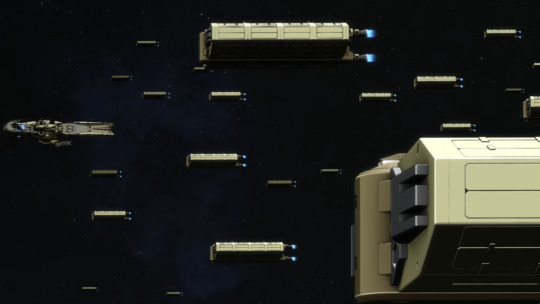
This scale is the result of unifying a large number of individual shipping companies under one banner. Specifically, all-women groups that had previously been on the bottom rung of the solar system's transport ecosystem. The society Teiwaz exists in is depicted as a deeply sexist one. None of the high-ranking leaders are female and we are told outright that women forced from their homes have to turn to extremely dangerous work in order to survive. At least prior to the formation of the Turbines, this involved running cargo along pirate-infested routes, cheaply, with minimal defences.
Here is our first big parallel to Tekkadan. Like the child soldiers of the CGS, these women (and let's be realistic, girls) were rendered vulnerable by their social position and exploited for their labour as a result. I think it's commendable the writers chose to present their situation in this fashion: as easy – and correct – as it is to feel moral outrage about people being exploited for sex, this is a subset of the work dispossessed people are forced into. It would have been easy to give the Turbines a more lurid origin, particularly as this show is not shy about depicting actual sex-trafficking. To focus on something more 'mundane' reinforces that societies run on exploitation are literally that: even innocuous industries like freight haulage are driven by underpaid, under-protected workers.
It is into this situation that a young and ambitious Naze Turbine stepped and via him that at least some of these women found a better position in life.
A family business
We largely see the Turbines through the lens of their flagship, the Hammerhead, and its crew-slash-polygamous-family. When we talk about 'the Turbines', this is usually who we mean, rather than the wider transport company, which mostly exists in the background of the show's events.
The Hammerhead's pursuit of the Isaribi marks the arrival of the Turbines into the plot, first via Lafter's delight in the chase (in a scene leaning heavily on the overt sexualisation of her design) and then with Naze announcing himself to Tekkadan directly, initiating a brief battle between the two groups.
Naze's moral character is established in his reaction to Maruba dismissing Tekkadan as a bunch of 'space rats'. His disgust is aimed squarely at the perpetrator of the risky implantation surgery, setting him apart from the likes of Gaelio and, by extension, the Earth-based taboos against augmented people. We can assume Naze is familiar with both the Alaya-Vijnana system and the consequences of its use, and his ire switches immediately from what he had been told were a bunch of thieves to the man they've 'stolen' from.
With the conflict resolved and Naze willing to negotiate, we begin to learn about the Turbines as a group. Notably, while he refers to his crew as his harem, his agreement with Kudelia that they are his wives is a 'sure, let's go with that' kind of deal. The English dub states 'they are sworn to me' while the sub has him describing them as 'my women'. In either case, the legal status of the arrangement is left ambiguous. But the gist of the matter is that Naze openly presents his crew as a harem, in line with a playboy persona he presents to the world.
In Season 2, we jump back to see how this arrangement came to be. Amida describes him as a 'maverick trafficker' who hired her for protection on a dangerous gig (we never do find out what he was transporting). They got along well and fell into bed together, but Amida wouldn't make the arrangement permanent as she'd promised her services to an all-women freighter company tackling even more dangerous work – a choice implied to stem from having once in their situation. On hearing this, Naze asks the question that distinguishes him from his eventual blood brother, Orga: 'how can I help?'
Orga never asks this aloud, despite everything he does having the stated aim of helping his comrades. It's not hard to see why when his point of reference is Mikazuki, who places absolute faith in his ability to provide solutions to their problems. This fundamentally unfair expectation screws with Orga's sense of responsibility, especially once coupled to the top-down structure of a military unit and an absence of people pushing back against it.
But Naze and Amida meet as adults, not children. They've already grown-up and learned who they are. They engage from positions of mutual respect, each appreciating how the other's skills can help with their goals. Rather than declaring some nebulous, far-off dream, Naze offers assistance to solve a specific problem Amida was already working on. He provides the ability to make connections between disparate groups of exploited woman and a face to present to a misogynistic world.
On top of having the luxury of pre-existing social capital, he can afford to invest years of his time in growing the Turbines to the point where they bring something to Teiwaz's table. This slow, careful approach puts them in a much stronger position to deal with the big dogs, all while aiming for the same things Tekkadan will later rush to seize: security, legitimacy and respect.
This last item bears some scrutiny, because it illustrates the importance of being precise about your goals. We know nothing about Naze prior to meeting Amida, so we don't know why his sexism (because it is still that) eschews looking down on women in favour of elevating them above men. But he feels no shame about achieving business success via a women-only organisation, freely admitting to have gotten where he has thanks to them and holding Amida back from defending him from insults against his manhood that ensue. Naze knows who he needs to impress and it's not loud-mouths like Jasley Donomikols but men like McMurdo Barriston, who value results above all else. Where Tekkadan insist on making as big a noise as possible to establish their credentials, Naze can shrug off disparaging remarks. Why start a fight when he's gained the confidence of the most powerful man in the Jupiter-sphere?
Besides, he adores being where he is. He's actively unrepentant about having enough 'wives' to crew a spaceship and if this partly works to downplay his shrewdness, it's also just who he is. The narrative presents him in an entirely positive light for it, too. Of all the authority figures in Iron-Blooded Orphans, he's easily the kindest, going out of his way to support other people, often irrespective of personal gain.
Tekkadan's recruitment over the course of the series is characterised by radical acceptance. Human debris, repentant murderers, Teiwaz pen-pushers, ambitious college kids – they're all welcomed and placed on equal footing. In light of this, I find it significant that when we see Amida pre-Turbines, she's dressed in a rather understated manner, masking past wounds and presenting in a stereotypically 'professional' fashion – likely to offset the concerns her clients have about hiring a woman mercenary. After years living with Naze, however, she's adopted a much more revealing outfit and attitude, no longer hiding who she is in either words, actions or appearance.

Amida's design is one of the most cheesecaky of the set but it's positioned as a sign that she – like everyone in Naze's orbit – is loved scars and all.
A ship of wives
Gundam has a history of featuring men surrounded by a faithful cohort of women. Starting with Paptimus Scirocco in Zeta Gundam (a decidedly evil example, though oddly enough, also hailing from Jupiter), through Chibodee Crocket in Mobile Fight G Gundam (a much closer match to the Turbine's model), and all the way to Shaddiq Zenelli in Witch From Mercury (where, like a lot of G-Witch's secondary details, it feels like a call-back for the sake of itself), the 'harem' trope is one the franchise has made use of time and again. Rarely, however, has it been as explicit about dropping pretences as with the Turbines. To dip into crudity for the sake of succinctness: yeah, they're fucking.

We are left in no doubt over this. Not only do we see the many children that have resulted, Naze's wives make it clear they expect and enjoy him exercising his spousal responsibilities in the bedroom. And here is where I wheel out my media literacy soapbox because whatever you personally feel about this as a concept, the text presents it as consensual and as free of coercion as it can possibly be.
Yes, there is an inherent power imbalance with Naze being head of the organisation and, quite literally, the man who saved these women's lives. Yes, some of them were clearly recruited to the Turbines as teenagers (as we see in Lafter's backstory). And yes, it's a fantasy that often extends out of sexist perspectives, ones the presentation here does not work especially hard to refute.
However at no point is there any suggestion in the text that Naze pressures anyone into having sexual relations with him. The opposite, if anything. Amida is the only member of the Hammerhead's crew he initiates with – his partner, in every sense of the word. Lots of the others come on to him and he doesn't remotely discourage them, sure. But you've also got Azee, who explicitly choses not to act the same and is just as much part of this core family (while this doesn't rule out her being sexually involved with Naze, it shows there is no expectation of uniform behaviour). Furthermore, when Lafter starts developing romantic feelings for Akihiro – as contrasted with familial ones for the Turbines in general and sexual ones for Naze – literally everyone encourages her to follow them, treating it as perfectly natural and a sign of maturity.
(To head off a rather trite misread, Naze describing his wives as 'like his daughters' in some respects does not invoke literal fatherhood. His 'paternal' statements are in line with the attitude he takes to Orga as his 'little brother' – that of someone with more experience taking responsibility for a more naïve dependent – and I think it's really worth stressing that non-nuclear family dynamics do not map to those of nuclear families. Though unquestionably a patriarch figure, Naze is happy Lafter going to go get what she wants and proud of her choices. The literal opposite of infantilising her.)
Thanks to the Urdr Hunt mobile game, we get a canonical glimpse into how Naze interacts with members of the Turbines beyond the Hammerhead's crew as well. Tamami Rakou is leader of grey-ops team the 'Rakou Pirates', who handle missions it would be better weren't directly associated with the Turbines (yes, their flags is the Turbines' logo with a skull painted over it, why do you ask?). When she reports to Naze halfway through the game, their relationship is revealed as one of friendly mentorship; again not a million miles off his attitude towards Orga. Tamami explains to another character that the Turbines took her in as a hot-headed youth and trained her in business matters. She seeks to repay what she perceives as a debt, with the ultimate goal of sharing sakuzuki cups with her boss. Naze, by contrast, already firmly recognises her worth (that's why he put her in her current role) and cautions her against taking too many risks.
Naze and Amida gently rib the junior captain over the course of these scenes, while Tamami tries way too hard to impress them. The joke is that she's presenting herself with loud, military seriousness in the face of the couple's customary informality, and it hinges on her having nothing to worry about. Naze already values her and cares about her safety. They even end their meeting warning each other not to do anything to make Amida sad, indicating shared affection for Tamami's 'Big Sis'.
All this is positioned without any hint of lasciviousness. When Naze looks forward to hearing stories of Tamami's exploits over drinks later, there's apparently no expectation of anything more. I bring this up to highlight the boundaries in the Turbines' living arrangements. Naze expresses admiration for women as a category, but he's no skirt-chaser. The polygamy is not mandatory and his support and generosity are not predicated upon it.
Also, and I fully appreciate this is its own brand of male bravado, the sexual side of the Turbines is mostly described as Naze pleasing his wives rather than the other way around. The story goes out of its way to make clear how OK everyone is with the arrangement, including an obligatory 'harem strike' joke to underline that while Naze may have institutional power, they outnumber him.
It should scarcely need stating that Iron-Blooded Orphans is not depicting relationship dynamics one should aspire to. Then again, I'm posting this on the internet, where reductio ad absurdum is treated as winning, so let's state it outright: pretty much every relationship in this show is some level of borked. From Shino and Yamagi's teenage inability to communicate, to McGillis indulging Almiria's childish fantasies of adulthood within a marriage they've been forced into, to Mika and Orga's entire deal, everyone is doing the best they can while setting each other up for a lifetime of therapy they're not going to get.
The flip side of this is that those same relationships are a source of support and joy for characters experiencing extremely harsh, miserable lives. In almost every case, the toxicity is intertwined with genuine love, and for the Turbines, the toxicity gets firmly minimised, counteracted by Naze's personality and by how his wives interact with him.
I am not going to stand up and say the Turbines are a model of healthy polyamory. Being married to your boss is rarely a good thing in reality. Within the show, however. it's presented as wholly positive and supportive to a degree that the other entanglements can only aspire.
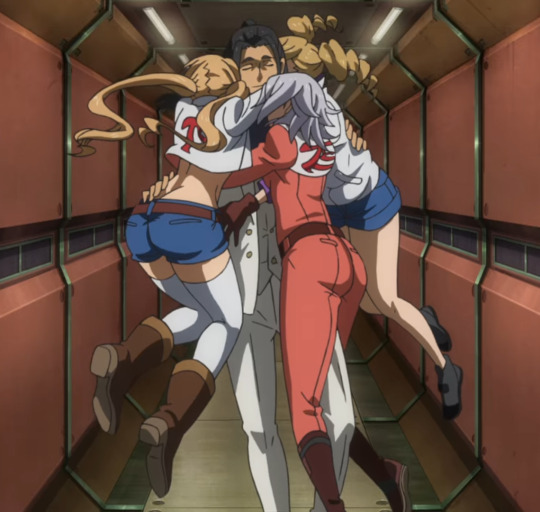
Sunset
Nothing lasts forever though. Isn't that the saying? Part reproach, part reassurance, it asserts that all is ultimately impermanent, no matter how much we might hope or fear otherwise. Orga sets his stall out in the name he gives his newly-liberated band of fighters: an iron flower, never wilting and never dying. Something impossible, that is ended prematurely by his rush to ensure its existence.
The Turbines are firmly established by the time they enter the story and as I've discussed, their rise is depicted as a cautious, time-consuming process. They have a fierce reputation – nobody messes with them, at least not without some high-ranking Earth bigwig offering plenty of money – but it's one tied to Teiwaz as a whole and that coupling of fortunes is both strength and weakness.
When the hammer comes down and Gjallarhorn begin interdicting Turbine ships, Naze wonders if McMurdo himself might be responsible. This suspicion comes after half a season of internal politics following Tekkadan's unexpectedly rapid ascent within Teiwaz. Their victories reflect well on Naze, since he brought them into the fold, but also cause the other high-ranking members to fear what they perceive to be his ambition. Things come to a head when Tekkadan align themselves with McGillis's attempt to seize power. With the youngest, upstart members of the organisation promised sovereignty of Mars (and its lucrative half-metal mining operations), a target is painted on Naze's back.
Of course, it isn't McMurdo who acts against him but Jasley, envious of Naze's position as the boss's favourite and wanting nothing more than to seize control of the transport division. There's no doubt he'd have sent the Turbines back to square one, exploiting them for his own gain. Jasley is very much in tune with the ambient misogyny and a conniving bastard to boot. He imagines by inciting Iok Kujan to destroy his rival, he will become next in line for control of Teiwaz itself.
He doesn't get away with it. The damage is done nevertheless.
When I say 'the Turbines are Tekkadan done right', it is a statement regarding success at their shared goals. Providing marginalised people with safety and security, enriching them through employment on their own terms, and establishing their long-term legitimacy – these represent the aims of both groups. The Turbines, however, achieve them at scale. Over 50,000 members! Operations from Jupiter to Venus! The ear of the head of Teiwaz! And, via groups like Tekkadan and Foundling (who Tamami is still mentoring at the point of writing; the survival chances of doofy gremlin children may go down as well as up), the opportunity to guide a new generation in a changing world.
But – and of course there's a 'but'; there was always going to be a 'but' – 'done right' does not mean 'perfect'. It does not mean 'forever'. For all the benefits the Turbines accrue for themselves, theirs is still a dangerous business. The risk may be reduced by solidarity but it doesn't go away. They still have to fight pirates and undertake jobs of dubious legality. Furthermore, as Jasley proves, they amass enemies as well as allies. Disruption to the social order creates ripples even – especially – when done with the best of intentions.
Above all, there's the question of whether their methods are sustainable. Throughout this piece, I have consciously centred Naze because that's what the Turbines' strategy is. Using him as a focal point around which to gather and an acceptable representative to men who wouldn't otherwise give them the time of day. While they might have achieved much simply by cooperating and are implied through Tamami to have retained considerable autonomy, it is Naze personally who allowed these women to escape the bottom of the heap.
This leaves them with a hideously dangerous vulnerability. The Turbines are inextricably tied to Naze's personal fortunes and those plummet in a second the instant Jasley shops him to Iok. By the rules of Teiwaz and his own sense of honour, Naze cuts ties with McMurdo to prevent Gjallarhorn pressing charges against the conglomerate. He expends all the good will he has accrued over the years to beg his now-former boss to take his people in. And then he and Amida sacrifice themselves in a nearly-vain attempt to safeguard their immediate family.
Worst of all, the catalyst for this is the very generosity of spirit that got Naze involved in the first place. He gives Tekkadan a chance and keeps doing so even as the cracks begin to show. He indulges Orga's ambitions out of the sense he's looking at his family's younger selves. As a result, he ties himself to them and is sent to his death by the wider consequences of their actions.
Amida describes Naze's love for her in terms of food: it is better to share a fine meal with others than to settle for average fare kept to yourself. That Naze was willing to share himself with so many people is laudable. But it is also his downfall and marks the harsh limitations of using the systems of the Post Disaster setting to imrpove a situation.
When you make deals with tigers, you have to remember what will happen should they get hungry.
A future even so?
Officially speaking, the Turbines end with Naze and Amida. The survivors are folded into what we might call Teiwaz-proper, directly under McMurdo's authority. When we next see them, they are clothed in drab black jackets, save for Azee who has traded her pink jumpsuit for a version of Naze's customary white suit. As the last remaining member of Amida's mobile suit squad, it seems leadership of this rebranded fleet has fallen to her, a position she uses – with McMurdo's blessing – to rescue Tekkadan's own dwindling numbers in their time of need.
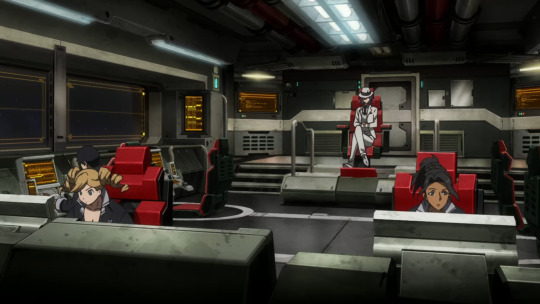
Here we find the two groups paralleling one another once again. Lives are spared at the expense of identity. A leader who truly cared is lost and the outcome is decided by a pragmatist. We don't see much of what happens to the Turbines now they've been consumed by Teiwaz's male-dominated hierarchy. What we do know is that, in the short term at least, they have been forbidden from carrying weapons and doing the kind of escort work the Hammerhead excelled at. This alone marks a steep reduction in their power.
While McMurdo certainly looks favourably on his new subordinates, he is no replacement for the man who saw them as the sun. His decision to cast Jasley to the wolves was motivated as much by heading off a rival as by avenging his preferred 'son' – and he's clearly not getting any younger. One can only speculate where a few years might land everyone in this new arrangement (indeed, one has).
The Turbines' story contains remarkable achievements and at the same time showcases the fragility of any achievement made within an unjust society. It took Jasley a single phone-call to annihilate everything Naze and Amida built. Many good people died and the happiness Naze's wives found with him did not last. His children can hardly be considered orphaned but their fate is left up in the air, albeit weighted more kindly than their parents' lives began.
Which is something that should not be dismissed. Iron-Blooded Orphans reflects a lot of harsh, miserable realities about what happens to those unfavoured by the world's structures. But it refuses to downplay the steps they take towards a better future. Amida was already fighting to protect those left in the cold and Naze followed her lead. Even if the very things that enabled him to do so much eventually turned into a trap, it still matters that he did what he could. It still counts.
There may not actually be a way to 'do Tekkadan right'. Its context is flawed, harmful and frequently vile. In a just society, nobody would need the strategies the Turbines use to carve a place for themselves – there would be no ladder for anyone to fall to the bottom of. Yet in its absence, there are and have always been people who try their best to rebalance the scales, resisting the narratives they are fed in whatever ways they can. That needs to be valued. I'm glad IBO does so.
Because fleeting joy is joy all the same. Love exists under the toughest conditions. And, in the end, Azee and Eco follow the example of those who've gone before, stepping forward to ask:
How can we help?
Other reference posts include:
IBO reference notes on … Gjallarhorn (Part 1)
IBO reference notes on … Gjallarhorn (Part 2)
IBO reference notes on … Gjallarhorn (corrigendum) [mainly covering my inability to recognise mythical wolves]
IBO reference notes on … three key Yamagi scenes
IBO reference notes on … three key Shino scenes
IBO reference notes on … three key Eugene scenes
IBO reference notes on … three key Ride scenes
IBO reference notes on … the tone of the setting
IBO reference notes on … character parallels and counterpoints
IBO reference notes on … a perfect villain
IBO reference notes on … Iron-Blooded Orphans: Gekko
IBO reference notes on … an act of unspeakable cruelty
IBO reference notes on … original(ish) characters [this one is mainly fanfic]
IBO reference notes on … Kudelia’s decisions
IBO reference notes on … assorted head-canons
IBO reference notes on … actual, proper original characters [explicit fanfic – as in, actually fanfic. None of them have turned up in the smut yet]
IBO reference notes on … the aesthetics of the mobile frame
IBO reference notes on … mobile suit designations
IBO reference notes on … the Gundams (part 1)
IBO reference notes on … the Gundams (part 2)
IBO reference notes on … the Gundams (part 3)
#gundam iron blooded orphans#gundam ibo#g tekketsu#tekketsu no orphans#turbines#naze turbine#amida arca#tekkadan#reference#notes#spoilers#major spoilers#I considered illustrating the section on their downfall too#but I didn't want to make myself cry
32 notes
·
View notes
Text
Persona 3 Reload

Tartarus "à la carte"
Persona 3 Reload is the remake of an rpg I hadn't initially played, from a saga I only knew the name of. Here, I fold: don't expect any comparisons between the old and new versions, as these are my first steps into this universe. And the game had everything to appeal to me, with its mix of turn-based combat, storytelling and dating sim-style management. With all these trump cards in hand, is this fusion a success?
❤ One thing I was already familiar with from the Persona universe was its highly recognizable visual identity. The 3D models reworked for this remaster are really neat and offer fluid, dynamic combat animations. The movement of sprites also brings dialogues to life. The design of the bestiary and the various Personas is also varied, inspired by well-known mythological and media figures, which makes them all the more striking. The scenery is not to be outdone; the various places to visit are quite detailed overall, and evolve as the story progresses, reflecting the gradual changes in this world. ❤ The story may seem a little cliché, with its shonen-ish feel, exuding the power of friendship and the budding heroism of its main character, but it nevertheless promises many epic and even quite moving moments. Indeed, despite its colorful appearance, the game tackles some rather dark themes and doesn't try to spare us. In fact, with its mechanics of literally living from day to day for 4 seasons, a sort of relaxing routine sets in, where violence can explode in our faces at a moment's notice. And after living a whole year immersed in this world, the game offers us a satisfying and emotionally rich finale. ❤ Speaking of clichés, the main characters are all walking stereotypes (the cool, mysterious hero, the sidekick best friend, the popular girl with a strong character, the mascot etc…) and yet, they become extremely endearing and memorable because they all, without exception, evolve alongside the MC and each brings a particular energy to this little group welded together for better or for worse. But this social dimension isn't limited to SEES members. The school and town are full of secondary characters with their own arcs, but also inhabitants who will have a narrative progression if we take the time to explore and chat with our environment (and offering some very fun stories to follow, such as the couple who stalk each other or the child and the cat). ❤ Another big success is the excellent soundtrack, with its energetic, jazzy tunes that follow you throughout the game and never tire, even after 100 hours of looping! "Baby, baby, baby” is guaranteed to haunt your nights. I'd also like to highlight the incredible Japanese cast, with all the big names in dubbing (Akira Ishida, Maaya Sakamoto, Megumi Ogata etc…) who portray their characters to perfection. ❤ The combat system is terribly effective, with each character having their own specificity, bringing a touch of tactic to the composition of the group. What's more, instead of the usual turn-by-turn combat, you can juggle between your characters as you weaken the enemy with an attack, further boosting group synergy. Add to this special attacks thanks to Theurgy, and you'll have some epic confrontations. The management of your Personas will also play an important role in victory conditions, with a fusion option that will become downright addictive, pushing the player to constantly experiment with new combinations to create new Personas and maximize their potential. As a famous franchise once said: "Gotta Catch 'Em All!"
+/- Although these monster encounters are enjoyable, the dungeon phases in Tartarus are not always the game's most exciting moments. Yes, there's a lot to loot, and the scenery and mechanics evolve slightly as you go along, but after several hours, you'll soon feel a certain weariness exploring these floors, as the structure remains basically the same. +/- To reinforce the power of our cards, our MC will interact with various characters, each associated with a tarot symbol. Managing our time each day will therefore take on an important role, as we must also increase our own personal stats (charm, intelligence, courage) in order to unlock new hidden interactions. The problem is that not all of these stories are very interesting; some are really touching or funny, while on the contrary, a few are of no interest at all and will only be played out of obligation to unlock certain special Personas.
✖ While the story is well-paced overall, the twists were still pretty predictable. I would have liked to have been a little more surprised, even if I enjoyed the whole experience. ✖ The 2D cutscenes aren't up to the same standard as the 3D ones, with a chara-design that's a little less polished in my opinion. ✖ I enjoyed the challenge of some of the bosses and even the Reaper, which took me several tries to complete (“normal” mode for me)…., but the ultimate boss of the Monad Passage is extremely frustrating, requiring a combination of specific conditions that are impossible to guess on your own, as no indication is given (I had to search the internet). ✖ Call me a killjoy if you like, but the choice of optional costumes to collect is highly questionable, given that the girls will be treated to bikinis, underwear and other highly sexualized clothing…. we could frankly have done without, especially as the male characters aren't subjected to the same treatment.
For me, this new edition of Persona was an excellent introduction to the franchise, with an almost flawless hand, as its various gameplay mixes kept me hooked for several hours, despite its inevitable redundant stages. But this daily routine also conveys the main message of the game: time is a precious, ephemeral hand of cards. Make the most of every moment, build relationships, try out new experiences, because before you know it, the months are gone…and the game is over.
youtube
➡ My Steam page
#persona 3#persona 3 reload#I miss it already but I'm lazy to start again new game + already xD#oh one important point - YOU CAN PET THE DOG#my main goal in every games lol (with cats)#personal#Lola plays games
2 notes
·
View notes